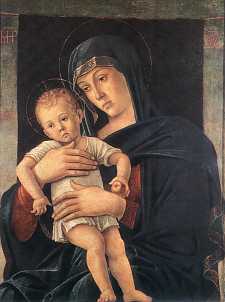Forordet til pavens bok om Jesus
Pave Benedekts forord til boka om Jesus som skal utgis i vår er nå offentliggjort. Det har overskrifta «Min forståelse av Jeus person i Det nye testementet», er en nokså tydelig kritikk av miljøer innenfor moderne bibelvitenskp, og det begynner slik:
Jeg har skrevet denne boka om Jesus etter en lang indre reise. I min ungdom – i 30- og 40-åra – ble det utgitt mange fascinerende bøker om Jesus. Jeg husker nå navna på bare noen av forfatterne: Karl Adam, Romano Guardini, Franz Michel Willam, Giovanni Papini, Jean-Daniel Rops. I alle disse bøkene er Jesus omtalt slik han beskrives i evangeliene: Hvordan han levde på jorda, og hvordan han – selv om han var sant menneske – brakte Gud til menneskene, siden han var ett med Gud og Guds sønn. Slik ble Gud synlig, gjennom mennesket Jesus, og fra Gud kunne man se bildet av det rettferdige mennesket.
Beginning in the 1950’s, the situation changed. The rift between the “historical Jesus” and the “Christ of faith” became wider and wider; the one pulled away from the other before one’s very eyes. But what meaning can there be in faith in Jesus Christ, in Jesus the Son the of living God, if the man Jesus is so different from how the evangelists present Him, and from how the Church proclaims Him on the basis of the Gospels?
….. ….. ….. I felt the need to provide the readers with these indications of method because these determine the route of my interpretation of the figure of Jesus in the New Testament.
For my presentation of Jesus, this means above all that I trust the Gospels. Naturally, I take for granted what the Council and modern exegesis say about the literary genres, about the intention of various expressions, about the communitarian context of the Gospels and the fact that they speak within this living context. While accepting all this as much as possible, I wanted to make an effort to present the Jesus of the Gospels as the real Jesus, as the “historical Jesus” in the real sense of the expression.
I am convinced – and I hope that I can also make the reader aware of this – that this figure is much more logical, and from the historical point of view also more understandable, than the reconstructions we have had to confront in recent decades.



 I sin tale nevnte paven at den apostloliske/katolske forkynnelsen alltid hadde sett på Jesu dåp som en viktig handling, både som et uttrykk for det trinitariske mysterium, og som en profeti på Jesus blod-dåp på korset – og som et symbol på alle Frelserens sakramentale handlinger.
I sin tale nevnte paven at den apostloliske/katolske forkynnelsen alltid hadde sett på Jesu dåp som en viktig handling, både som et uttrykk for det trinitariske mysterium, og som en profeti på Jesus blod-dåp på korset – og som et symbol på alle Frelserens sakramentale handlinger. 3. januar har Den katolske kirke nå en (valgfri) minnedag for Jesu hellige navn, og på
3. januar har Den katolske kirke nå en (valgfri) minnedag for Jesu hellige navn, og på  Denne kvelden, 31. desember, opplever vi to ting samtidig: Det ene er avslutninga av kalenderåret, det andre er høytida for Maria, Guds mor, som avslutter juleoktaven. Det første markers av alle, det andre er for de troende.
Denne kvelden, 31. desember, opplever vi to ting samtidig: Det ene er avslutninga av kalenderåret, det andre er høytida for Maria, Guds mor, som avslutter juleoktaven. Det første markers av alle, det andre er for de troende.